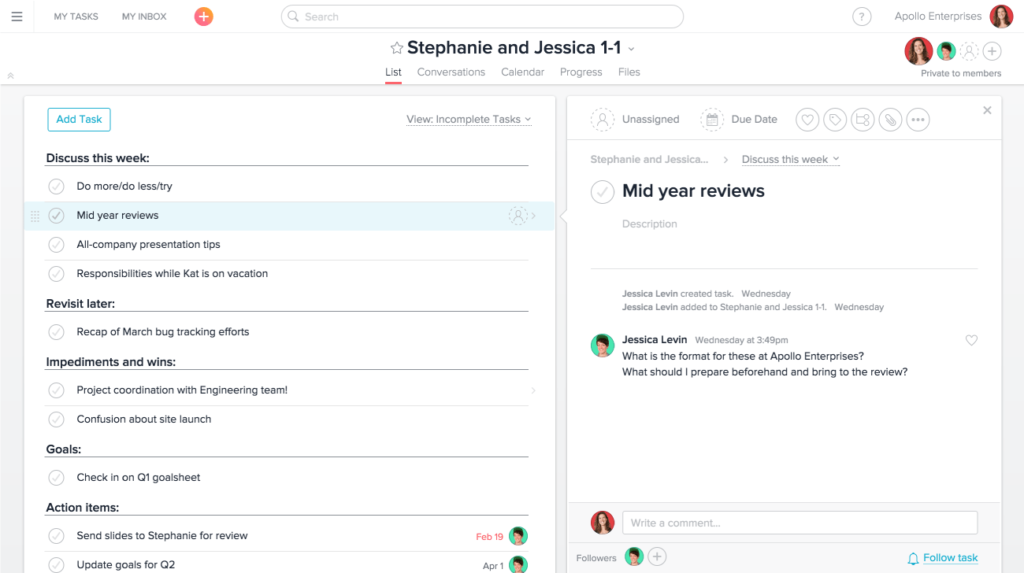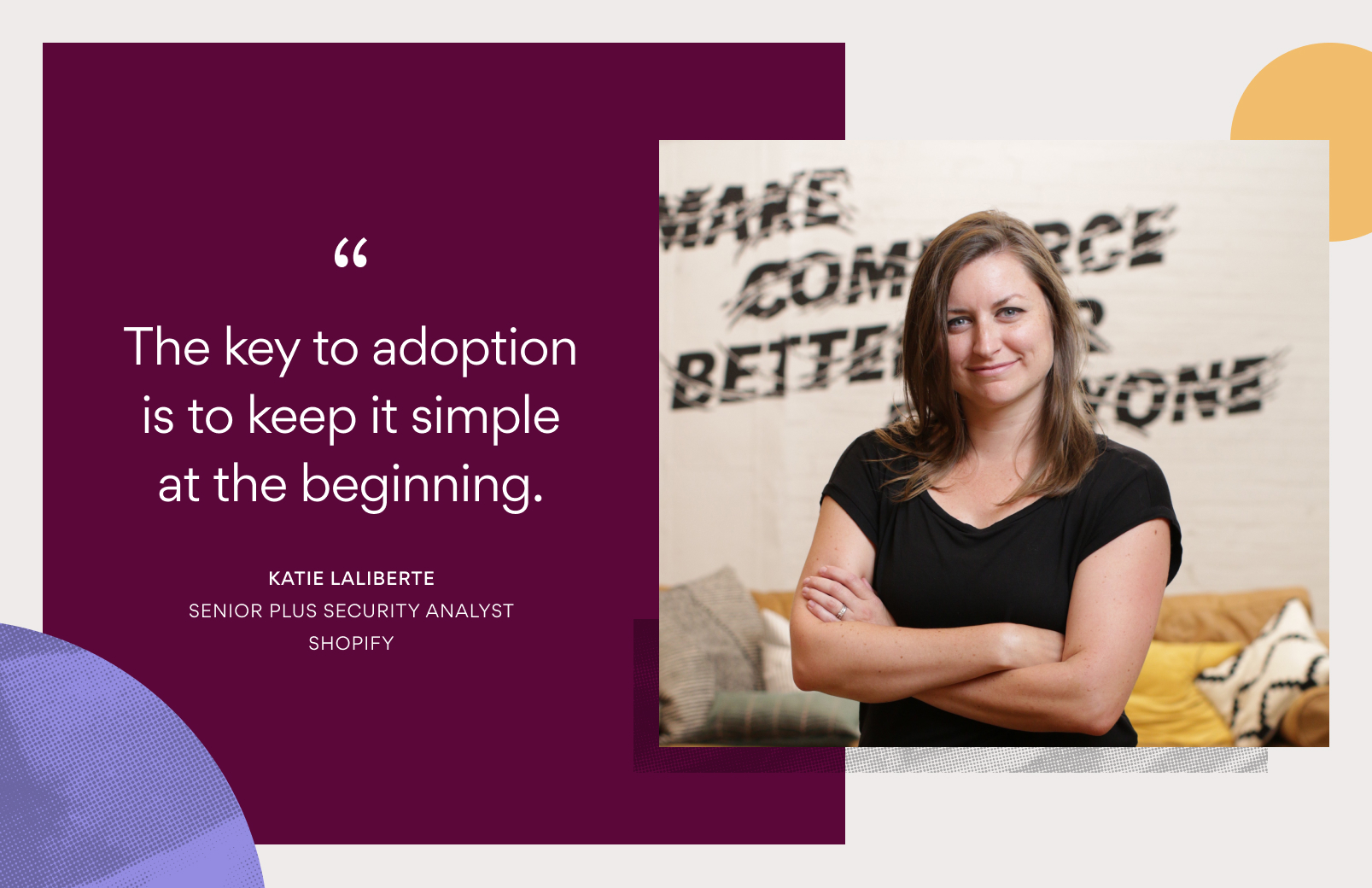One-on-one for the books: how to plan productive 1:1 meetings

Meetings are a fact of office life. And while they may not be everyone’s favorite part of the day, with a little bit of planning, it is possible to make them productive and worthwhile for you and your teammates. One meeting type in particular can even help people feel more engaged at work: the one on one meeting.
Unlike department meetings, planning meetings, or quick syncs where teams might discuss the most pressing issues of the day, week, or month, the one on one meeting agenda looks a little different. For managers and their reports, one on one meetings are dedicated time for connecting regularly on goals, building rapport, and most importantly, coaching and mentorship.
One on one meetings are dedicated time for connecting regularly, building rapport, and most importantly, coaching and mentorship.
The most effective 1:1s are those that are prepped ahead of time. But more often than not, work (about work) gets in the way of planning a meaningful one-on-one agenda, leading to wasted time deciding what to talk about or meandering discussions that don’t feel actionable. The good news is: planning a productive one-on-one meeting is easier than it seems.
Whether you’re a manager or a report, here are few simple ways to make the most of your one-on-ones.
Create a shared one on one meeting agenda
One of the reasons why 1:1 meetings can feel ineffective is that there isn’t a consistent, shared space for creating and tracking agenda items. Without a designated spot for planning your agenda ahead of time (and to refer to during the meeting itself), it’s easy to veer off course.
If, for instance, you’ve ever kicked off a 1:1 with a list of agenda items in your head, only to find yourself talking about cat memes 10 minutes later, you probably need a better way to prep for your 1:1 meetings.
Instead, create a shared 1:1 agenda for you and your report (or manager). This makes it easy for both of you to collaborate on what to discuss. In Asana, you can set up a private meeting project for this, but whatever tool you choose to use, make sure that it’s easily accessible and editable by both 1:1 participants.
“Now that I’m using Asana, my conversations and 1:1s are so much more productive because we have this shared space where we can collaborate.”
– Tim Wood, Head of Product, Patreon
Organize your 1:1 agenda
Once you’ve created a shared space for planning and tracking your one on one meeting agenda, the next step is to add some structure. The idea here is to define a couple of high-level themes to help you organize discussion topics from one meeting to the next. Depending on the needs and preferences of you and your report, you can organize your 1:1 agenda many different ways. For example, it might be helpful to group agenda items into the following categories:
- Discuss this week
- Revisit later
- Roadblocks and wins
- Goals
- Action items
To do this in Asana, just create sections for each theme in your meeting project:

Organizing your one on one meeting agenda this way balances tactical conversations about project work with bigger picture discussions about how that work ladders up to overall company goals and objectives and, not to mention, individual career goals. As you meet week to week, team members come away with a clearer sense of what they’re working on—and why it matters as well.
Add agenda items as they come up
With a shared space for your agenda and a clear structure in place, now comes the fun (and easy) part: adding topics for discussion. As soon as you or your report think of a topic—whether it’s feedback on a recent presentation, a question about budgets, or a growth opportunity—add these items to your shared agenda. Be sure to include a brief description and attach any relevant files, so you don’t forget anything important.
Adding agenda items ahead of time lets manager and report reflect on important topics before discussing in person.
This will help you avoid the mad scramble to remember everything you wanted to discuss right before your meeting. Adding agenda items ahead of time also lets both you and your report prep and reflect on important topics before discussing in person.
What to talk about in 1:1s
If you’re unsure of what to talk about in your one-on-ones, remember that it’s a shared space for asking questions, getting feedback, and discussing long-term goals. Both manager and report should feel comfortable contributing to the agenda. Here, for example, are a few topics you could discuss in your next 1:1:
- Weekly and monthly priorities
- Feedback on any in-progress assignments
- Checking in on team and company goals
- Identifying and resolving any roadblocks
- Celebrating successes and milestones
- What worked well (and didn’t) on recent projects
- Career goals and learning opportunities
Take notes and take action
Before your next 1:1, take some time to review whatever topics have been added to your shared agenda since your last meeting and prioritize discussion topics. As the meeting progresses, make sure someone is taking notes on what’s discussed and to document any action items that come up.
By clearly outlining next steps and who’s doing what (by when), you create a sense of accountability and help ensure that any follow-up items are completed in a timely fashion. If you’re using a project in Asana to track your one on one meetings, all you have to do is create and assign a task and move it to your “Action items” section.
1:1s that work for everyone
Regular one-on-one meetings are a critical ingredient to keeping employees happy, productive, and engaged. By creating a shared space for your agenda and adding a little structure, you and your team members are more likely to keep your 1:1s on track and have meaningful and actionable conversations.
Learn how Asana can help you deliver a great employee experience by running all of your cross-functional programs and activities better.

